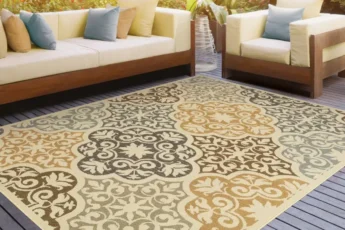Vinyl plank flooring is a trending flooring option among homeowners these days. Even the wooden floor contractors like it as it offers high durability, moisture resistance, stylish appeal, and easy installation. Whether you remodel the living room, upgrade the kitchen decor, or outfit your basement, these vinyl planks allow for that hardwood charm without the need for high maintenance. The problem arises in achieving that clean, professional look for your vinyl plank floors. The right cutting is essential in this. So, the question most people ask is, what are the ideal tools to cut vinyl plank flooring?
Our guide today is all about this; we will tell you the right tools to make proper cuts for tight seams and a flawless finished look. So, stay with us, and this might help you even with your DIY flooring installation projects.
Best Tools To Cut Vinyl Plank Flooring
Here are the five tools that any flooring contractor, installer, or DIY enthusiast must have to make those precise cuts for vinyl plank floors.
1. Utility Knife – Best for Straight Cuts
The simplest and the most widely used of all the tools for cutting vinyl planks is a sharp utility knife. This tool allows for straight cuts, letting you have those short plank sections. In order to cut the vinyl plank, you must cut the line with a pencil and a straightedge. You must first measure the plank and score along that measured line with the knife. Bend your plank backward until it naturally snaps along the scored line in a clean manner. This tool is cheap and anyone can buy it, making it a perfect choice for beginners to make clean cuts. Be advised that it is not ideal for curves or thick planks, and it requires patience to make those clean cuts.
2. Vinyl Plank Cutter – Clean, Quiet, and Dust-Free
Next up is the vinyl plank cutter or also called a laminate cutter. This is a manual tool that is used for the specialized cutting of the LVP (Luxury Vinyl Planks) or the laminate floors. This tool looks just like your average paper cutter, but it’s much heavier duty compared to it – it is made for the thicker materials. Place your plank in the cutter and align it exactly with the blade; following that, just pull down on its handle. You get fast and clean cuts without the need for electricity & zero sound. There will be no debris or dust either. Again, it’s to be used to make straight cuts, not ideal for complex shapes or angles. It’s a bit costly, but it will be a one-time investment.
3. Jigsaw – Perfect for Curves and Custom Cuts
There will be a need to cut the vinyl planks for corners, door frames, or pipes. The right tool for these cuttings is a jigsaw. This tool has a narrow blade that allows you to make precision cuts for odd angles and curves. To use it, you need to first draw a cut line and keep your plank secured in one place. Use the fine-toothed blade for the plank, now guide that jigsaw slowly along the line. The tool is the right choice for the curved, custom cuts for different floor shapes. There will be minimal chipping if you have precise control over the tool. Yes, it will require power, and some dust and noise will be generated. It’s best to buy a jigsaw with a high-quality blade to prevent any melted edges or fraying.
4. Miter Saw – Ideal for Angled and Cross Cuts
If the room where you plan to install the vinyl flooring planks has angled walls, you need a precision angled cut. The tool for that would be a miter saw, a powerful tool. First, measure the angle and adjust your miter saw as per those measurements. Hold the plank firmly in place and lower the blade to cut along the scored measurements. You can make perfect cuttings for odd corners with it, fast & accurately. The best part is that you will be able to cut multiple planks at one time. It is a bit bulky, and it’s best to use it in a workshop for safety reasons.
5. Circular Saw – For Long, Straight Cuts
For the need to cut several planks at one time, you must opt for the circular saw, it actually speeds things up. It is helpful in cases where the utility knife or manual cutting tools become slow. Firstly, you should cut the line where you need to make the cut & clamp down the plank to a proper workbench. Now, guide the circular saw across that pre-cut line to have a straight edge. It’s suitable for the long, straight cuts with high speed performance, working well for thicker planks. Be advised that it needs experience to use it safely and is not ideal for small-scale projects.
Tips for a Flawless Finish
No matter what the ideal tools to cut vinyl plank flooring for your project, you need to keep in mind some tips for using them. These tips are:
- Always make a habit of measuring twice to be sure and cut once; precision will be key here.
- Instead of a curved edge, rotate the plank to make straightedge cuts for clean, accurate lines.
- Use a pencil or chalk to mark your measurements for the cutting.
- It is highly advised to use safety glasses when working with the electricity-powered cutting tools.
Which Tool Is Best for You?
Here is a breakdown for you on which tool is best based on your individual skill level for vinyl plank flooring installation.
| User Type | Recommended Tool(s) |
| Beginner | Utility Knife, Vinyl Plank Cutter |
| Experienced | Jigsaw |
| Contractor/Pro | Miter Saw, Circular Saw, All Tools |
| Small Room Project | Utility Knife, Vinyl Cutter |
| Complex Layout Room | Jigsaw, Miter Saw, |
Final Thoughts
The choice of the right cutting tool for vinyl plank flooring doesn’t have to be a difficult decision to make. All you need is a little knowledge of your skill level and your needs for the flooring projects. With the right cutting tool in hand, you will be able to make those clean, accurate cuts. A cleanly cut and smooth vinyl flooring plank will ensure a flawless, professional installation.











